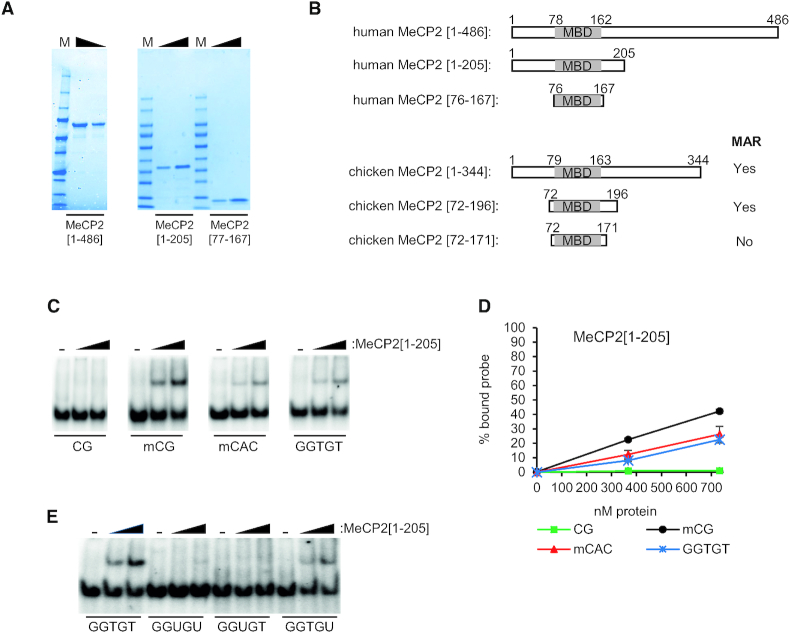Figure 1.
MeCP2 [1–205] binds to non-methylated GT-rich DNA in vitro and requires a methyl group provided by thymine. (A) Coomassie stained gel of purified recombinant proteins used in this study, full-length MeCP2[1–486], MeCP2[1–205] and MeCP2[77–167]. M = protein standard (Precision Plus, Bio-Rad). (B) Schematic diagram of the fragments of MeCP2 used here and in earlier studies. The lower diagrams show fragments of chicken MeCP2 tested previously for binding to GT-rich sequences (MAR) with high affinity, indicating whether GT binding was detected (20). The human MBD (grey shading) is located between amino-acids 78 and 162 (14). The highly homologous chicken MBD (also grey) extends from amino-acid 79 to 163. (C) EMSAs using varying amounts of MeCP2[1–205] or no protein (−) with probes containing non-methylated CG (CG), methylated CG (mCG), methylated CAC (mCAC) or GGTGT. (D) Graph showing quantification of MeCP2[1–205] binding to probes containing CG (filled squares), mCG (filled circles), mCAC (filled triangles) or GGTGT (crosses). Mean percentage of probe shifted (±SEM) based on triplicate experiments. (E) EMSAs using no protein (−) or varying amounts of MeCP2[1–205] with probes containing GGTGT, GGUGU, GGUGT or GGTGU to assess the influence of the thymine methyl group on binding.

